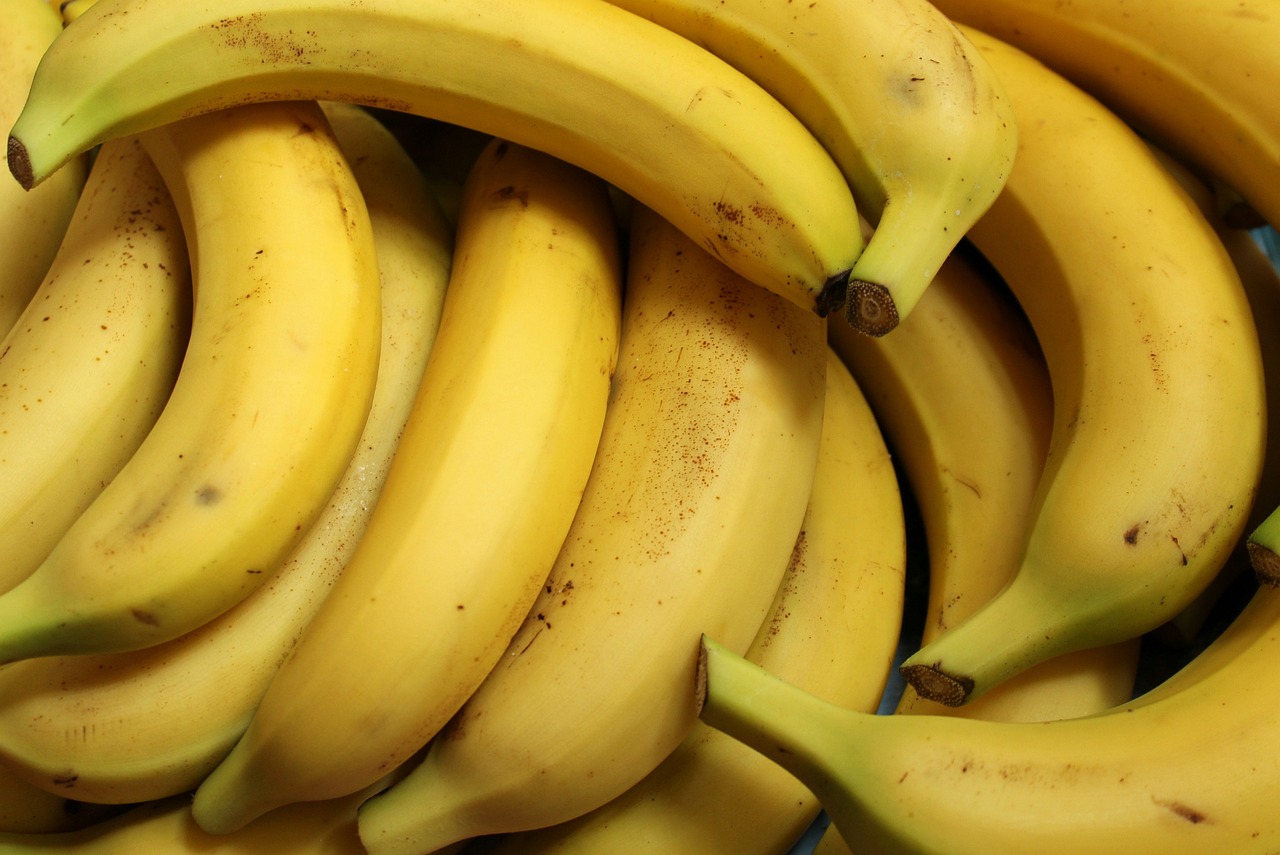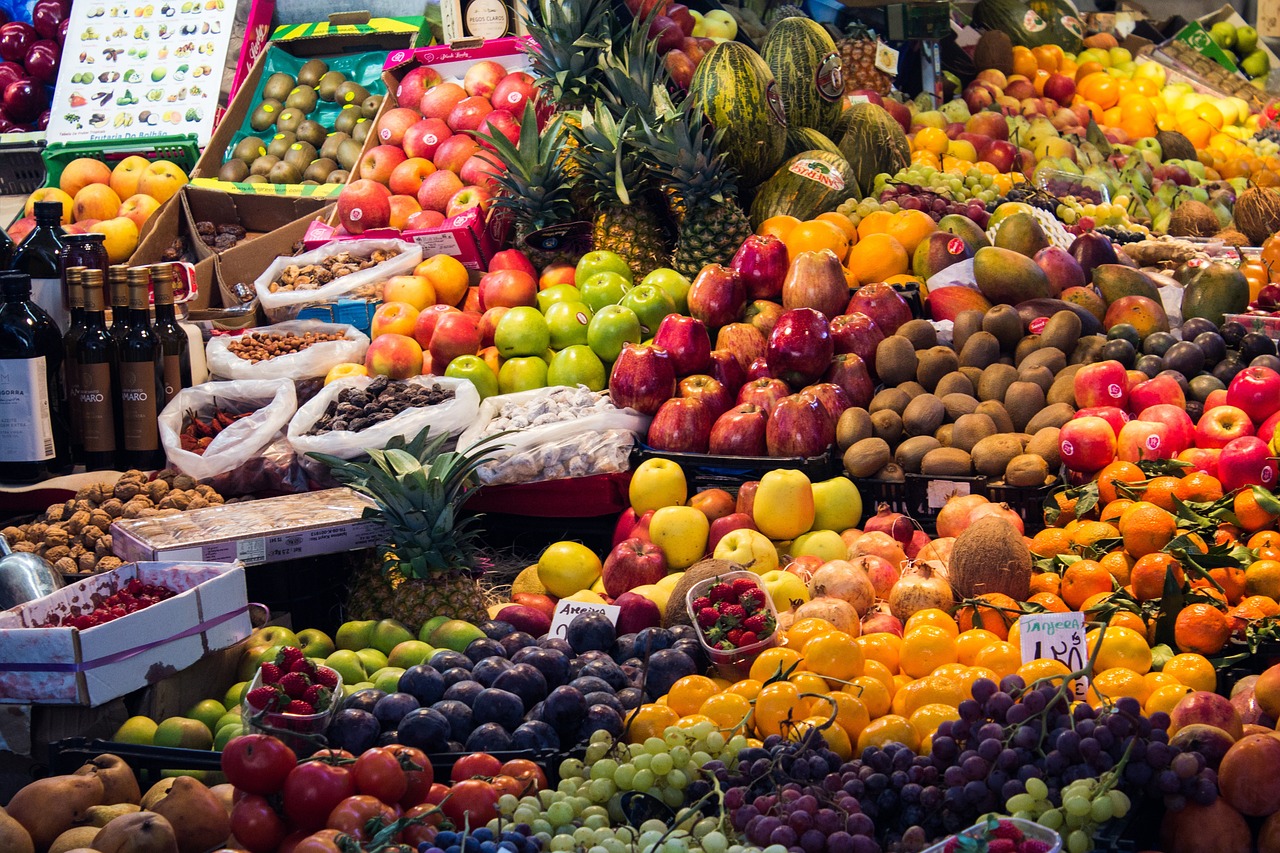What Does a Climate-friendly Diet Look Like?
In today's world, where climate change looms large, many of us are asking ourselves how we can make a difference. One of the most impactful ways to contribute to a healthier planet is through our food choices. So, what does a climate-friendly diet actually look like? It's not just about cutting out meat or going vegan; it's about making informed decisions that prioritize sustainability, health, and the environment.
A climate-friendly diet is primarily centered around plant-based foods while also considering the ethical sourcing of animal products. This means filling your plate with a variety of fruits, vegetables, whole grains, legumes, and nuts. But why stop there? It’s also essential to think about where your food comes from and how it’s produced. For instance, opting for locally sourced and seasonal produce can significantly reduce your carbon footprint, as it minimizes the transportation emissions associated with long-distance food shipping.
Moreover, a climate-friendly diet isn’t just about what you eat but also how much you waste. Did you know that nearly one-third of all food produced globally is wasted? Reducing food waste is crucial not only for saving money but also for conserving resources and reducing greenhouse gas emissions. By planning meals and using leftovers creatively, you can make a significant impact.
To give you a clearer picture, here are some key components of a climate-friendly diet:
- Emphasize plant-based foods: Think fruits, vegetables, legumes, grains, and nuts.
- Sustainable animal products: If you consume meat, choose sustainably sourced options.
- Local and seasonal eating: Support local farmers and reduce transportation emissions.
- Minimize food waste: Plan meals, store food properly, and get creative with leftovers.
Ultimately, a climate-friendly diet is about making choices that are not only good for you but also for the planet. It’s a journey that requires a shift in mindset, but the rewards—both personal and environmental—are well worth the effort.
1. What are the main benefits of a climate-friendly diet?
A climate-friendly diet helps reduce greenhouse gas emissions, conserves water and land resources, and promotes biodiversity. It can also lead to better health outcomes by encouraging the consumption of nutrient-rich foods.
2. Do I have to give up meat completely?
No, you don't have to eliminate meat entirely. The focus is on reducing meat consumption and choosing sustainably sourced options when you do.
3. How can I start transitioning to a climate-friendly diet?
Start by incorporating more plant-based meals into your week, planning your meals to avoid waste, and choosing local and seasonal foods whenever possible.
4. Is organic food necessary for a climate-friendly diet?
While organic foods can be beneficial due to their farming practices, the most important factor is to choose foods that are sustainably produced, whether they are organic or not.

Understanding Climate-friendly Foods
When we talk about a climate-friendly diet, we're diving into a world of choices that not only nourish our bodies but also care for our planet. So, what exactly makes a food climate-friendly? At its core, it’s about opting for options that have a lower environmental impact. This means prioritizing plant-based foods and sustainably sourced animal products that tread lightly on our Earth.
Imagine your plate filled with vibrant vegetables, whole grains, and legumes. These foods are not just good for you; they’re like little heroes fighting against climate change! By choosing more fruits and vegetables, you’re reducing the demand for resource-intensive foods that contribute to greenhouse gas emissions. For instance, consider how much water and land it takes to produce a pound of beef compared to a pound of lentils. The contrast is staggering!
In a nutshell, here are some key components of a climate-friendly diet:
- Plant-based foods: Think fruits, vegetables, grains, nuts, and seeds.
- Sustainably sourced animal products: If you choose to eat meat or dairy, look for options that are certified organic or grass-fed.
- Seasonal and local produce: These not only taste better but also reduce the carbon footprint associated with transportation.
Now, let’s break it down a bit more. When we emphasize plant-based options, we’re not just talking about salads and smoothies. It’s about embracing a whole new way of eating that includes a variety of foods. For example, legumes and pulses, such as beans, lentils, and chickpeas, are fantastic sources of protein and can easily replace meat in many dishes. They’re not just nutritious; they also require significantly less water and land compared to animal farming.
Moreover, incorporating whole grains like quinoa, brown rice, and oats into your meals enhances your dietary fiber and nutrient intake. These grains are not only filling but also contribute to a more sustainable food system. And let’s not forget about vegetables! They’re the backbone of a climate-friendly diet. The more colorful your plate, the better it is for both your health and the environment.
In conclusion, understanding climate-friendly foods is about making informed choices that benefit both you and the planet. It’s about creating a balanced diet that is rich in nutrients while also being mindful of the ecological footprint. So, next time you’re at the grocery store or planning your meals, think about how your choices can lead to a healthier you and a healthier planet.

The Environmental Impact of Meat Consumption
When we think about our diets, we often focus on health, taste, and convenience. However, have you ever considered the environmental impact of what’s on your plate? The reality is that meat consumption plays a significant role in climate change, and understanding this impact is crucial for anyone looking to adopt a more sustainable lifestyle. From the greenhouse gases emitted during production to the vast resources required for raising livestock, the footprint of meat is far larger than many of us realize.
To put it simply, the meat industry is one of the largest contributors to greenhouse gas emissions. According to the Food and Agriculture Organization (FAO), livestock production accounts for approximately 14.5% of global greenhouse gas emissions. This is comparable to emissions from all the cars, trucks, and planes in the world combined! The staggering amount of methane produced by cattle, which is over 25 times more potent than carbon dioxide in terms of its heat-trapping ability, is a major player in this equation. But that’s just scratching the surface of the environmental concerns.
Additionally, meat production requires an enormous amount of resources. For instance, it takes about 1,800 gallons of water to produce just one pound of beef. This is not only a staggering amount but also highlights the strain that meat production places on our already limited freshwater resources. In contrast, plant-based foods typically require significantly less water and land, making them a more sustainable choice.
Another critical aspect to consider is the deforestation linked to meat production. Forests are cleared to create grazing land for cattle or to grow feed crops, which leads to a loss of biodiversity and contributes to the degradation of ecosystems. The Amazon rainforest, often referred to as the "lungs of the Earth," is particularly affected, with vast areas being cleared for livestock farming. This not only disrupts wildlife habitats but also reduces the planet's capacity to absorb carbon dioxide, further exacerbating climate change.
In light of these facts, reducing meat consumption can have a powerful impact on our environment. Here are some key points to consider:
- Greenhouse Gas Emissions: Lowering meat intake can significantly reduce your carbon footprint.
- Water Usage: Shifting to plant-based diets can conserve precious water resources.
- Land Use: By consuming less meat, we can reduce the need for deforestation and promote biodiversity.
Ultimately, the choices we make about our diets can either contribute to or help mitigate the environmental crisis we face today. By becoming more aware of the impact of meat consumption, we can take steps toward a healthier planet. Whether it’s reducing portion sizes, opting for plant-based alternatives a few times a week, or choosing sustainably sourced meats, every little bit helps in the fight against climate change.
Q: What are the main environmental impacts of meat consumption?
A: The main impacts include greenhouse gas emissions, high water usage, and deforestation caused by livestock farming.
Q: How can I reduce my meat consumption?
A: Start by incorporating more plant-based meals into your weekly diet, choosing meat-free days, or exploring alternatives like legumes and whole grains.
Q: Is all meat equally harmful to the environment?
A: Not necessarily. Some meats, like chicken and sustainably sourced fish, have a lower environmental impact compared to beef or lamb.
Q: Can a climate-friendly diet be affordable?
A: Yes! Focusing on seasonal fruits and vegetables, legumes, and whole grains can often be more budget-friendly than purchasing meat.

Plant-based Alternatives
When it comes to creating a climate-friendly diet, one of the most exciting avenues to explore is the world of . These foods not only offer a delicious way to cut down on meat consumption but also pack a nutritional punch that can rival traditional meat sources. Imagine swapping out a juicy beef burger for a hearty black bean burger or indulging in a creamy cashew cheese instead of dairy. The shift to plant-based options can be a game changer, both for your health and for our planet.
Plant-based alternatives are predominantly made from ingredients like legumes, grains, and vegetables. They are often rich in protein, fiber, and essential vitamins and minerals. For instance, a simple lentil stew can provide you with more protein and fiber than a piece of steak while being significantly lower in calories and saturated fats. Not only do these alternatives help in reducing your carbon footprint, but they also support a more sustainable food system.
Here are some popular plant-based alternatives that you might consider incorporating into your meals:
- Legumes and Pulses: Foods like lentils, chickpeas, and black beans are fantastic sources of protein and can be used in a variety of dishes, from soups to salads.
- Whole Grains: Quinoa, brown rice, and farro are not just filling; they also offer a wealth of nutrients that are often lacking in processed foods.
- Nuts and Seeds: Almonds, chia seeds, and hemp seeds are great for snacking or adding to smoothies, providing healthy fats and proteins.
- Vegetable-Based Proteins: Products like tofu and tempeh are versatile and can absorb flavors well, making them perfect for stir-fries and marinades.
Moreover, the transition to plant-based alternatives doesn't have to feel overwhelming. Start small! Perhaps try incorporating a meatless Monday into your week, or experiment with a new recipe that features plant-based ingredients. You'll be surprised at how satisfying and flavorful these dishes can be. Plus, the more you explore, the more you'll discover exciting new flavors and textures that will keep your meals interesting.
In addition to being delicious and nutritious, these alternatives are often more sustainable. For example, the production of plant-based foods generally requires fewer resources—such as water and land—compared to meat. This means that by choosing plant-based options, you're not just making a healthier choice for yourself but also contributing to a healthier planet.
In conclusion, embracing plant-based alternatives is a delicious and effective way to align your diet with climate-friendly practices. With so many options available, it's easier than ever to make the shift. Who knows? You might find your new favorite meal in the process!
Q: What are the health benefits of a plant-based diet?
A: A plant-based diet is associated with lower risks of heart disease, high blood pressure, diabetes, and certain cancers. It is also typically lower in calories and saturated fats.
Q: Do I need to take supplements on a plant-based diet?
A: While many nutrients can be obtained from a well-planned plant-based diet, some people may need to consider supplements for nutrients like Vitamin B12, Vitamin D, and Omega-3 fatty acids.
Q: How do I start incorporating plant-based meals into my diet?
A: Start by replacing one meal a week with a plant-based option. Gradually increase the frequency as you discover new recipes and ingredients that you enjoy.

Legumes and Pulses
When it comes to building a climate-friendly diet, legumes and pulses are the unsung heroes that deserve a spotlight. These nutrient-rich powerhouses are not only packed with protein, but they also play a significant role in promoting sustainability. Think of them as the green superheroes of the food world, swooping in to save the day by providing essential nutrients while minimizing environmental impact.
Legumes, which include beans, lentils, chickpeas, and peas, are incredibly versatile. You can toss them into salads, blend them into soups, or even use them as a base for a hearty veggie burger. The beauty of legumes lies in their ability to adapt to various cuisines, making them a staple in kitchens around the globe. For instance, a spicy lentil curry can warm you up on a chilly evening, while a refreshing chickpea salad can be a perfect summer dish. The options are endless!
One of the most impressive aspects of legumes and pulses is their environmental efficiency. Unlike traditional meat sources, which require vast amounts of water and land, legumes are much less resource-intensive. They help to fix nitrogen in the soil, reducing the need for synthetic fertilizers and promoting healthier ecosystems. This natural process not only benefits the crops but also enhances soil fertility, making it a win-win situation for farmers and the planet alike.
Here’s a quick comparison to illustrate their benefits:
| Food Type | Protein Content (per 100g) | Water Usage (liters) | Greenhouse Gas Emissions (kg CO2e) |
|---|---|---|---|
| Beef | 26g | 15,415 | 27 |
| Lentils | 9g | 1,200 | 0.9 |
| Chickpeas | 19g | 1,200 | 0.6 |
As you can see from the table, legumes and pulses not only provide a substantial amount of protein but also require significantly less water and produce far fewer greenhouse gases compared to meat. This stark contrast makes a compelling case for incorporating more legumes into our diets.
Incorporating legumes and pulses into your meals can be a delicious adventure. Consider experimenting with different recipes to discover the myriad flavors and textures they offer. Whether you’re making a creamy hummus, a zesty bean chili, or a simple lentil soup, you’ll find that these ingredients not only satisfy your taste buds but also contribute to a more sustainable food system.
So, if you’re looking to make a positive impact on the environment while enjoying delicious meals, legumes and pulses should be at the forefront of your culinary choices. They are a simple yet effective way to reduce your carbon footprint and embrace a healthier lifestyle!
- What are legumes and pulses? Legumes are a family of plants that produce pods containing seeds, while pulses are the dry seeds of these plants, such as lentils, beans, and chickpeas.
- How do legumes contribute to a climate-friendly diet? They require less water and land compared to meat, and they help improve soil health through nitrogen fixation.
- Can I get enough protein from a plant-based diet that includes legumes? Absolutely! Legumes are an excellent source of protein and can easily meet your dietary needs when included in your meals.
- How can I incorporate more legumes into my diet? Start by adding them to salads, soups, and stews, or try making dips like hummus. You can also substitute meat with legumes in various recipes!

Whole Grains and Vegetables
When it comes to embracing a climate-friendly diet, whole grains and vegetables are your best friends. Not only do they pack a powerful nutritional punch, but they also play a crucial role in reducing our environmental footprint. Think of whole grains as the sturdy backbone of your meals—providing essential nutrients like fiber, vitamins, and minerals that keep your body running smoothly. They're like the unsung heroes of the pantry, quietly supporting your health while being kinder to the planet.
Vegetables, on the other hand, are the vibrant colors on your plate, bursting with flavors and nutrients. Incorporating a variety of vegetables into your diet not only enhances your meals but also contributes significantly to sustainability. For instance, seasonal vegetables often require fewer resources to grow and transport, making them a more eco-friendly choice. When you opt for locally sourced produce, you're not just supporting your community; you're also cutting down on those pesky carbon emissions associated with long-distance food transport.
Now, let’s break it down a bit. Whole grains, such as quinoa, brown rice, and oats, are not just filling; they also help stabilize blood sugar levels and keep you feeling full longer. This means you’re less likely to reach for that unhealthy snack an hour later, which is a win-win situation! Plus, they require less water and land compared to many animal-based foods, making them a more sustainable option.
As for vegetables, think of them as nature’s multivitamin. They come in all shapes and sizes, from leafy greens like spinach and kale to colorful options like bell peppers and carrots. Each type of vegetable offers unique health benefits. For example:
- Leafy greens: Rich in iron and calcium, essential for maintaining strong bones and energy levels.
- Root vegetables: Like sweet potatoes, they are high in fiber and antioxidants.
- Cruciferous veggies: Such as broccoli and cauliflower, known for their cancer-fighting properties.
By incorporating a variety of whole grains and vegetables into your meals, you’re not just making a healthier choice for yourself; you’re also making a positive impact on the planet. The beauty of these foods lies in their versatility. You can toss them into salads, blend them into smoothies, or use them as the base for hearty grain bowls. The possibilities are endless! So, next time you’re planning your meals, remember to fill your plate with these colorful, wholesome options.
Q: What are some easy ways to include more whole grains in my diet?
A: Start by swapping out white rice for brown rice or quinoa. You can also try whole grain breads and pastas. Experiment with different grains like farro or barley in your salads and soups!
Q: How can I make sure I’m eating a variety of vegetables?
A: Aim for a rainbow on your plate! Choose vegetables of different colors, and try to include at least three different types in each meal. You can also visit local farmers' markets to discover seasonal veggies you may not have tried before.
Q: Are frozen vegetables as nutritious as fresh ones?
A: Absolutely! Frozen vegetables are often picked at their peak ripeness and flash-frozen, preserving their nutrients. They’re a convenient option to have on hand for quick meals.

Reducing Food Waste
Reducing food waste is not just a noble endeavor; it’s a vital step towards a more sustainable lifestyle. Did you know that approximately one-third of all food produced globally is wasted? That’s a staggering statistic that highlights the urgent need for change. When we throw away food, we’re not just discarding leftovers; we’re also wasting the resources that went into producing, transporting, and storing that food. This includes water, energy, and labor, all of which contribute to greenhouse gas emissions. By minimizing food waste, we can significantly lower our carbon footprint and promote a healthier planet.
So, how can we tackle this issue effectively? First, it’s essential to understand what constitutes food waste. Food waste can occur at various stages, from production and distribution to consumption. In households, it often results from over-purchasing, improper storage, and lack of meal planning. By implementing some simple strategies, we can make a meaningful impact. Here are a few practical tips:
- Plan Your Meals: Before heading to the grocery store, create a meal plan for the week. This not only helps you buy only what you need but also encourages you to use ingredients efficiently.
- Store Food Properly: Learn how to store fruits, vegetables, and leftovers correctly to extend their shelf life. For instance, keeping apples in the fridge can help them last longer.
- Use Leftovers Creatively: Get creative with your leftovers! Transform yesterday's dinner into a new dish, like turning roasted vegetables into a hearty soup.
Additionally, consider composting as a way to deal with food scraps. Composting not only reduces the amount of waste sent to landfills but also creates nutrient-rich soil for gardening. It’s a win-win situation! Moreover, educating yourself about expiration dates can help you differentiate between “sell by,” “use by,” and “best before” dates, which often leads to unnecessary waste. Remember, many foods are still safe to eat after their expiration date has passed.
Lastly, it’s essential to spread awareness about food waste in your community. Engage with local organizations, schools, or community gardens to promote initiatives that focus on reducing food waste. By working together, we can create a culture that values food and respects the resources that go into producing it.
In conclusion, reducing food waste is a crucial aspect of adopting a climate-friendly diet. It’s about making conscious choices and being mindful of our consumption habits. Every small effort counts, and together, we can pave the way for a sustainable future.
Q: What is food waste?
A: Food waste refers to food that is discarded, lost, or uneaten. This can happen at any stage of the food supply chain, from production to consumption.
Q: How can I reduce food waste at home?
A: You can reduce food waste by planning meals, storing food properly, using leftovers creatively, and composting food scraps.
Q: What are the environmental impacts of food waste?
A: Food waste contributes to greenhouse gas emissions, as decomposing food in landfills releases methane, a potent greenhouse gas. Additionally, it wastes the resources used in food production, such as water and energy.
Q: Can I compost food scraps?
A: Yes! Composting is an excellent way to recycle food scraps and create nutrient-rich soil for gardening.

Seasonal and Local Eating
Eating seasonally and locally is like tuning into the rhythm of nature. When you choose foods that are in season and grown nearby, you're not just treating your taste buds to fresher flavors; you're also significantly reducing your carbon footprint. Imagine biting into a juicy, sun-ripened tomato in the summer, bursting with flavor, versus a bland, out-of-season one that traveled thousands of miles to reach your plate. The difference is palpable!
By opting for seasonal produce, you're supporting local farmers and economies, which is a win-win for everyone involved. Local foods often require less transportation, which means fewer emissions and a smaller environmental impact. Plus, when you eat what's in season, you're more likely to consume fruits and vegetables at their peak nutritional value. It's like getting the best of both worlds: deliciousness and healthiness wrapped up in one.
So, what does seasonal eating look like? Picture this: in the spring, you might enjoy crisp asparagus and sweet peas; in the summer, vibrant berries and heirloom tomatoes; in the fall, hearty squash and apples; and in the winter, root vegetables and citrus fruits. Each season brings its own bounty, and embracing this variety not only keeps your meals exciting but also aligns your diet with nature's cycles.
Moreover, local eating fosters a sense of community. When you visit farmers' markets or join a community-supported agriculture (CSA) program, you connect with the people who grow your food. You gain insights into their farming practices and the challenges they face, creating a deeper appreciation for your meals. It’s like building a relationship with your food, where you know exactly where it comes from and how it was grown.
Here’s a quick look at the benefits of seasonal and local eating:
| Benefits | Description |
|---|---|
| Freshness | Seasonal foods are harvested at their peak, ensuring maximum flavor and nutrients. |
| Environmental Impact | Local foods reduce transportation emissions, contributing to lower carbon footprints. |
| Support for Local Economy | Buying from local farmers helps support the community and keeps money circulating locally. |
| Diversity in Diet | Seasonal eating encourages a varied diet, rich in different nutrients and flavors. |
Incorporating seasonal and local foods into your diet doesn’t have to be daunting. Start by visiting a local farmers' market or exploring grocery stores that prioritize local produce. You might be surprised by the variety available right in your backyard. Additionally, consider planning your meals around what's in season. Not only will this make your grocery shopping easier, but it will also inspire you to try new recipes and ingredients.
Ultimately, seasonal and local eating is about more than just food; it's about embracing a sustainable lifestyle that honors the earth. By making these conscious choices, you're not only nourishing yourself but also contributing to a healthier planet. So why not give it a try? Your taste buds—and the environment—will thank you!
- What are the benefits of eating seasonally?
Eating seasonally provides fresher, tastier food, supports local economies, and reduces environmental impact. - How can I find out what's in season?
Check local agricultural extension websites or visit farmers' markets to learn about seasonal produce in your area. - Is it more expensive to eat local?
While some local foods may be pricier, buying in season often reduces costs and supports sustainable practices.

Benefits of Organic Farming
When we think about the future of our planet, organic farming stands out as a beacon of hope. But what exactly makes it so beneficial? For starters, organic farming practices are designed to enhance the health of our ecosystems. By avoiding synthetic fertilizers and pesticides, organic farmers not only produce healthier food but also protect the soil, water, and biodiversity. Imagine a world where the food we consume nourishes not only our bodies but also the earth itself. That's the essence of organic farming!
One of the most significant benefits of organic farming is its contribution to biodiversity. Organic farms often feature a variety of crops and livestock, which helps create a balanced ecosystem. This diversity is crucial because it makes farms more resilient to pests and diseases, reducing the need for chemical interventions. In fact, studies have shown that organic farms can support up to 30% more species than conventional farms. It's like having a vibrant community where everyone plays a role in maintaining harmony!
Another compelling reason to support organic farming is its positive impact on soil health. Organic practices, such as crop rotation and cover cropping, improve soil structure and fertility. Healthy soil not only produces more nutritious crops but also sequesters carbon, helping to mitigate climate change. According to research, organic soils can store up to 25% more carbon than conventional soils. This means that every bite of organic food you take is a step towards a healthier planet!
Furthermore, organic farming often promotes animal welfare. Animals raised on organic farms typically have access to outdoor spaces, allowing them to engage in natural behaviors. This contrasts sharply with the confinement seen in many conventional farming operations. By choosing organic products, consumers are making a statement about the kind of treatment they believe animals deserve. It's not just about what we eat; it's about how it was raised!
Lastly, organic farming supports local economies. When you buy organic produce from local farmers, you're not just getting fresh food; you're also helping to sustain local jobs and businesses. This creates a win-win situation where communities thrive and consumers gain access to high-quality, sustainable food options. It's like planting a seed for a better tomorrow, one purchase at a time!
In summary, the benefits of organic farming are manifold, ranging from enhanced biodiversity and improved soil health to better animal welfare and support for local economies. By embracing organic practices, we not only nourish ourselves but also contribute to the well-being of our planet. So, the next time you're at the grocery store, consider reaching for that organic label—it's a choice that echoes far beyond your plate!
- What is organic farming? Organic farming is an agricultural method that emphasizes the use of natural substances and processes to grow crops and raise livestock.
- How does organic farming benefit the environment? Organic farming reduces pollution, conserves water, and promotes biodiversity, making it a more sustainable option compared to conventional farming.
- Is organic food healthier than conventional food? While organic food is often considered healthier due to the absence of synthetic pesticides and fertilizers, the nutritional differences can vary by product.
- Why should I support local organic farmers? Supporting local organic farmers helps strengthen the local economy, reduces transportation emissions, and provides you with fresher produce.

Strategies for Transitioning
Transitioning to a climate-friendly diet can feel like a daunting task, but it doesn’t have to be! Think of it as a journey rather than a race. The key is to make gradual changes that fit into your lifestyle, which can help you embrace this new way of eating without feeling overwhelmed. Start by assessing your current eating habits. Are there certain meals you can easily swap out for more sustainable options? For example, if you typically have a meat-heavy dinner, consider replacing it with a hearty vegetable stir-fry or a delicious bean chili. This small change can make a big difference over time.
Another effective strategy is meal planning. By dedicating a little time each week to plan your meals, you not only ensure that you’re making climate-friendly choices but also help reduce food waste. When you know what you’re going to eat, you can buy exactly what you need and avoid those impulse purchases that often lead to food going bad in the fridge. Plus, you can explore new recipes that highlight plant-based ingredients, making your meals exciting and varied!
Don’t forget about gradual changes. You don’t have to throw out everything in your pantry at once. Instead, try to incorporate more plant-based meals into your week. Perhaps start with “Meatless Mondays” and gradually increase the number of vegetarian meals you prepare. This way, your palate can adjust, and you’ll discover new favorite dishes that might just replace your old standbys.
Additionally, consider joining a community group focused on sustainable living. Finding community support can be invaluable. Whether it’s a local cooking class, a community garden, or an online forum, connecting with like-minded individuals can provide encouragement and inspiration. You’ll also have the opportunity to share tips, recipes, and resources that can make your transition smoother.
Finally, don’t underestimate the power of education. The more you learn about the benefits of a climate-friendly diet and the impact of your food choices, the more motivated you’ll be to stick with it. Read books, watch documentaries, and follow blogs that focus on sustainable eating. Knowledge is empowering, and it can help you make informed decisions that align with your values.
To summarize, transitioning to a climate-friendly diet is all about small, manageable changes. By planning your meals, gradually incorporating more plant-based foods, seeking community support, and educating yourself, you’ll be well on your way to a healthier, more sustainable lifestyle. Remember, every little step counts in the journey towards a more eco-friendly way of eating!
- What is a climate-friendly diet? A climate-friendly diet prioritizes foods that have a lower environmental impact, such as plant-based foods and sustainably sourced animal products.
- How can I reduce my meat consumption? Start by designating certain days for meatless meals and experiment with plant-based recipes to find meals you enjoy.
- What are some easy plant-based meals to try? Consider dishes like vegetable stir-fries, lentil soups, or quinoa salads, which are nutritious and satisfying.
- How does meal planning help with sustainability? Meal planning helps minimize food waste and ensures you buy only what you need, making it easier to choose sustainable options.
- Where can I find community support for sustainable eating? Look for local groups, cooking classes, or online forums that focus on sustainable living and climate-friendly diets.

Community Support and Resources
Transitioning to a climate-friendly diet can feel like a daunting task, but it doesn’t have to be a solo journey. In fact, the beauty of this lifestyle change lies in the community support you can find along the way. Whether it's through local groups, online forums, or social media platforms, connecting with others who share your passion for sustainability can provide not only motivation but also invaluable resources. Imagine having a circle of friends who not only cheer you on but also share recipes, tips, and even local sources for fresh produce!
Many cities have community gardens, farmers' markets, and local co-ops that not only offer fresh, seasonal produce but also foster a sense of community. Participating in these activities can help you learn more about where your food comes from and how it impacts the environment. Plus, you get to meet like-minded individuals who are just as passionate about making a difference. It’s like finding your tribe in a world that sometimes feels disconnected.
Online platforms are also a treasure trove of information and support. Websites and social media groups dedicated to sustainable living can be a goldmine for tips on meal planning, shopping sustainably, and even cooking with seasonal ingredients. For example, you can join Facebook groups where members share their experiences, challenges, and successes in adopting a climate-friendly diet. This not only helps you stay accountable but also gives you access to a wealth of knowledge that can make your transition smoother.
Moreover, many organizations offer workshops and classes focused on sustainable eating practices. These can range from cooking classes that emphasize plant-based meals to seminars on reducing food waste. Participating in such events can equip you with practical skills while also expanding your network of eco-conscious friends. It’s an opportunity to learn and grow together, making the journey towards a climate-friendly diet not just about food, but about community and connection.
Incorporating community resources into your transition can also help you discover local farms that practice organic farming. Supporting these farms not only contributes to a healthier ecosystem but also strengthens your local economy. You might even find a nearby farm that offers a Community Supported Agriculture (CSA) program, allowing you to receive fresh produce directly from the source every week. This not only guarantees you fresh ingredients but also minimizes your carbon footprint by reducing the distance food travels to reach your plate.
In summary, embracing a climate-friendly diet becomes a lot easier when you tap into community support and resources. Whether you’re attending local events, engaging in online discussions, or shopping at farmers' markets, the connections you make can significantly enhance your journey. So why not take that first step today? Reach out, engage, and see how much easier and more enjoyable this transition can be when you’re not going it alone!
Q: What is a climate-friendly diet?
A climate-friendly diet focuses on reducing environmental impact through food choices, emphasizing plant-based foods and sustainably sourced animal products.
Q: How can I start transitioning to a climate-friendly diet?
Start small by incorporating more plant-based meals into your week, reducing meat consumption, and participating in local community initiatives.
Q: Are there specific foods I should avoid?
Avoid highly processed foods and those that have a large carbon footprint, such as beef and dairy, while opting for seasonal and local produce.
Q: How does community support help in this transition?
Community support provides motivation, shared resources, and opportunities to learn from others who are on a similar path, making the transition easier and more enjoyable.
Frequently Asked Questions
- What is a climate-friendly diet?
A climate-friendly diet focuses on consuming foods that have a lower environmental impact. This typically includes a higher intake of plant-based foods, such as fruits, vegetables, legumes, and whole grains, while reducing the consumption of resource-intensive animal products. By choosing foods that are sustainably sourced and seasonal, you can significantly lower your carbon footprint.
- Why should I reduce my meat consumption?
Reducing meat consumption is crucial because meat production is a significant contributor to greenhouse gas emissions and resource depletion. By cutting down on meat, you not only help mitigate climate change but also promote better health. Think of it this way: every time you choose a plant-based meal, you're casting a vote for a healthier planet!
- What are some good plant-based alternatives to meat?
There are plenty of delicious plant-based alternatives to meat! Legumes and pulses are fantastic sources of protein, while options like tofu, tempeh, and seitan can add variety to your meals. Whole grains like quinoa and brown rice also provide essential nutrients and can be used in many dishes to create satisfying meals without meat.
- How can I minimize food waste?
Minimizing food waste is a key element of a climate-friendly diet. Here are some tips: plan your meals ahead of time, store food properly, and use leftovers creatively. You can even compost food scraps to enrich the soil! Remember, every little effort counts in reducing waste and making the most out of what you buy.
- What are the benefits of eating seasonal and local foods?
Eating seasonal and local foods not only tastes better but also significantly reduces your carbon footprint. These foods don’t have to travel far to reach your plate, which cuts down on transportation emissions. Plus, supporting local farmers helps strengthen the community and promotes sustainable agricultural practices.
- How can I transition to a climate-friendly diet?
Transitioning to a climate-friendly diet can be easy and enjoyable! Start by gradually incorporating more plant-based meals into your week. Meal planning can help you stay organized and inspired. Joining community groups focused on sustainable eating can also provide support and resources to guide you through the transition.
- What role does organic farming play in sustainability?
Organic farming is vital for sustainability as it promotes biodiversity and reduces the use of harmful chemicals. By supporting organic practices, you contribute to a healthier ecosystem and help protect the environment. Think of organic farming as a nurturing approach that respects nature while providing wholesome food!



















